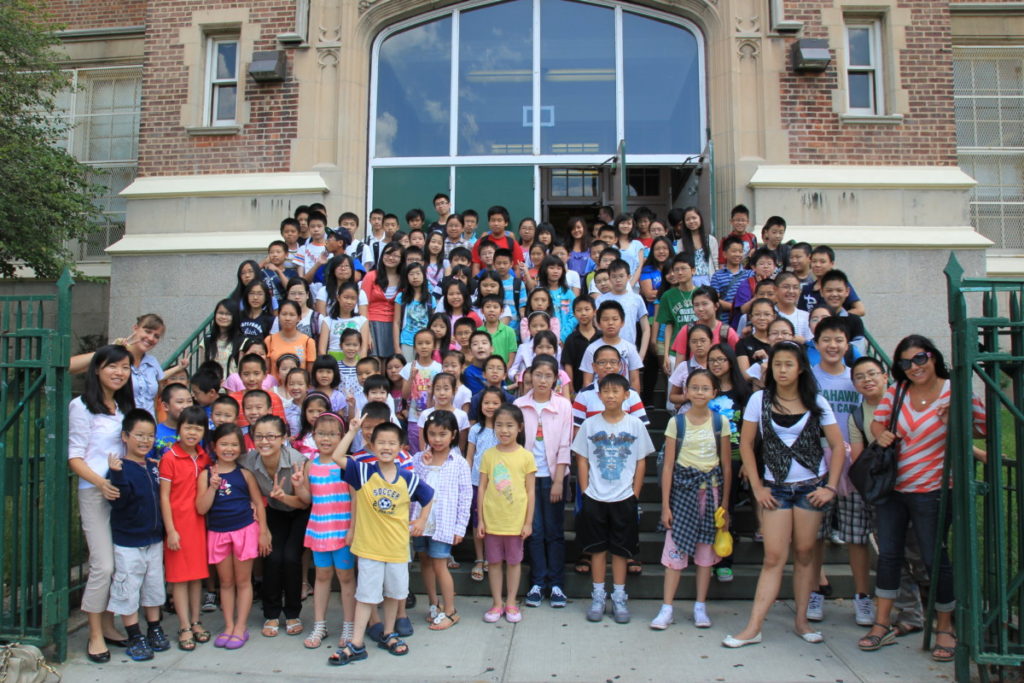This fall, on October 22, eighth graders in New York are taking the test that determines whether they can get into one of the city’s top specialized high schools. Some seventh graders, meanwhile, started preparing for next year’s test a year in advance. Peina Chen and Alison Tan began preparing for it at Angel Advantage Center in Sunset Park last summer.
And Chen and Tan know that taking the test in 2017 is special, because they will be facing the first change that has ever been made in the exam, known as the Specialized High School Admission Test (SHSAT), since 1990s. The change may seem small but it is a big one for students across the city. And it is a big one for education officials who see the change as an effort to address a problem of racial balance in these special schools, which are dominated by Asians, with fewer Caucasians, and even fewer blacks and Hispanics.
What the tests no longer have is what was called the “scrambled paragraph” section, in which students are asked to put five random sentences in order for each of five paragraphs, given the first sentence. This part aims to test the student’s ability to organize written materials, using hints provided by transitional words and phrases. “Each correctly ordered paragraph is worth double the value of a question in any other section of the test,” the handbook reads.
The problem, many educators say, is that this type of question is not practiced at school. Students who familiarize themselves with the questions or learn the strategy at prep centers do better than those reply on their schools. And, as most Asian students receive SHSAT tutoring, they tend to do better in this section than students of other races. The removal of this section, as the Department of Education told SchoolBook, aims to make the test fairer.
The city’s Panel for Educational Policy approved the changes which include the removal of scrambled paragraph section from the test on September 21. “Doing this will open up opportunity for more high-performing students in all communities who are not necessarily taking specialized preparatory classes, but who are high performing, to apply,” panel member Isaac Carmignani said in a story in SchoolBook. In a story headlined Changes Are Coming to the City’s Specialized High Schools Test.
Not everyone is happy with the change especially groups representing Asian students. David Lee, Executive Director of CoalitionEdu, an association of Alumni, Parents, students, and supporters of the Specialized High Schools of New York City, told The Brooklyn Ink, “Eliminating scrambled paragraphs makes the test easier in our opinion. We maintain the test must maintain a standard of rigor.”
And Stanley Ng, a District 20 Community Education Council member, said that “easier tests can lead to more ties in scores,” making the admission process harder for the specialized high schools given limited places at a later stage.
Elissa Stein, PTA co-president at Brooklyn Technical High School, argued in The Huffington Post that the inequality came from the different qualities of education offered at different schools in New York City, not from the test. “What’s wrong with challenging kids when taking a test to get into challenging schools?” said Stein in The Huffington Post.
Chen and Tan, meanwhile, are working hard. They are currently focusing on Math and English Language Arts in the prep program. Tan said she hasn’t heard about scrambled paragraphs in the test, while Chen said she did a few of such questions in a book at home.
Learning centers are ready to adapt to the change. “If they remove the scrambled paragraphs, I wouldn’t devote as much time in teaching and as much practice for kids to that particular skill,” said Anna Knutson, their English teacher. “There is a benefit of doing some of that anyway, because a lot of connections you learn through that is really helpful in writing.”

Knutson said the official full update of the format change for the 2017 test would not be available until a couple of (five) months before the exam.
According to Sherry Yan, Founder of APlus Academy, the scrambled paragraph section will be replaced by reading comprehension questions. That change, she says, will make the test more difficult for those whose first language is not English.
Unlike Tan, who is American-born, Chen moved to the U.S. from Guangdong Province four years ago. When asked what she found most difficult, Chen replied quickly, “Vocabularies. In some multiple choice questions, you have to dig really deeply into the passages.”
When Chen first came here, as a third grader, that due to her language barrier she didn’t take the New York State third-grade (English Language Arts) test, which all her classmates took. But now she said she is coping fine with the language. “She’s already able to pull out higher level concepts and to articulate them better at the beginning,” said Knutson.
At the prep center, students study to stay ahead of their classmates. Seventh graders like Chen and Tan are learning Advanced Math, and take a vocabulary quiz every week. “I’m far ahead at school,” Tan said.
On top of that, the students are spending extra time reading articles about different cultures, to build background knowledge for reading comprehension. Knutson said that one difficult aspect of the SHSAT is that the texts chosen tend to be focused more on one cultural tradition or history than another, so it pays to know something about many cultures. ”The more time you spend reading and learning, the more you’re gonna know,” she said.
Will the test change disadvantage Asian students, especially non-native speakers like Chen? Siu Ming Lau, who is the director of Angel, does not think so. “It’s just how they ask the questions, the kids can adapt quickly.”
“I don’t think that making something more inclusive would ever exclude Asian-Americans from still continuing to do well,” said Knutson.


Leave a Reply